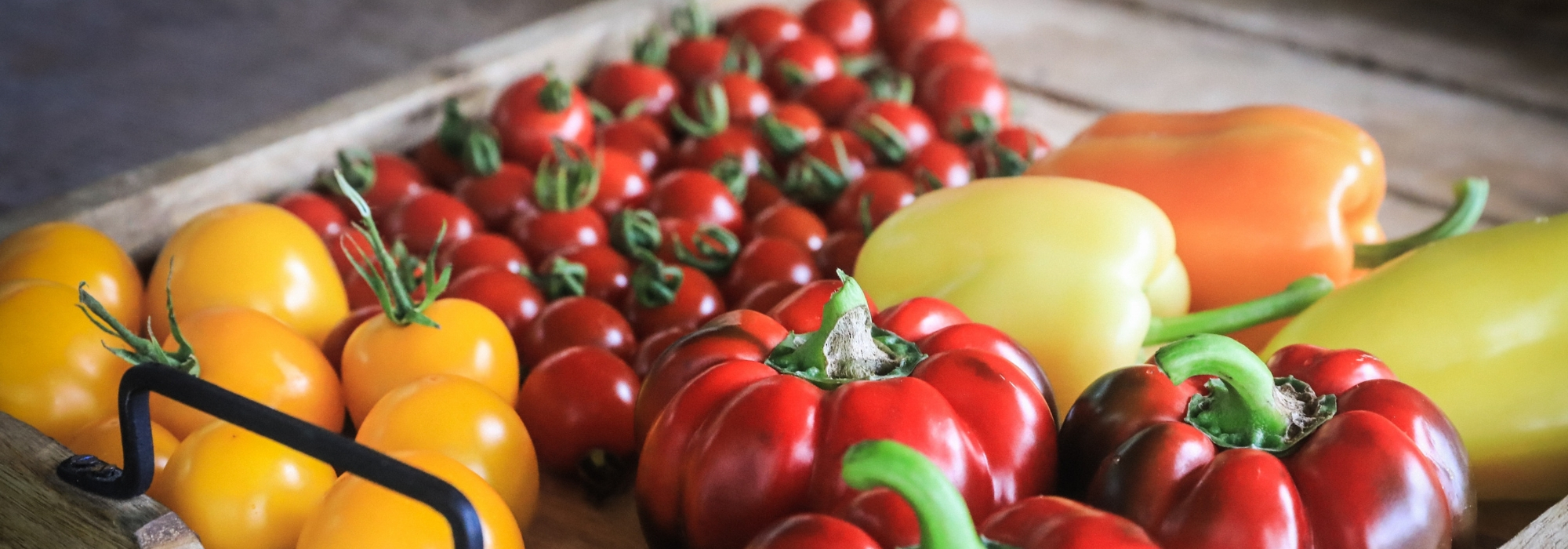
How to ripen the last fruits and vegetables from the vegetable garden
at home or in the garden
Contents
At the end of summer and the beginning of autumn, days shorten and nights become cooler. In the vegetable garden, vegetables and fruits sometimes struggle to reach ripeness. This is particularly true for tomatoes, melons, and peppers, as well as, in the orchard, peaches and grapes. At the same time, during this time of year, diseases such as powdery mildew or downy mildew tend to appear: the harvest should not be delayed if we want to enjoy the garden’s produce…
So, how can we ripen these last vegetables and fruits, easily, in the garden or at home? Here are some tips and advice!
Ripening fruits at home
Have you ever heard of climacteric fruits? This somewhat scientific term refers to fruits that can ripen after harvest, while non-climacteric fruits, logically, are those that cannot!
What sets them apart is that climacteric fruits produce ethene as soon as they start to ripen.
Ethene is a natural gas that is synthesised and then released by certain fruits. It is a plant hormone that, among other things, stimulates the ripening of many fruits.
When ethene begins to be produced, they can not only continue to ripen but also cause other climacteric fruits to ripen, as ethene is volatile and evaporates easily.
Non-climacteric fruits do not produce ethene and do not respond to ethene: they cannot therefore ripen after harvest… even if they are placed next to ripe climacteric fruits.
| Climacteric fruits | Non-climacteric fruits |
| Apricot
Banana Fig Persimmon Melon Nectarine Peach Pear Apple Plum Tomato |
Cherry
Lemon and other citrus trees Courgette Cucumber Strawberry Raspberry Blueberry Olive Watermelon |
Read also
Drying harvested fruits from the gardenRipening fruits and vegetables at home
In practice, it is therefore very simple: climacteric fruits and vegetables can be harvested before they are fully ripe: they can still ripen at home, and this ripening can be stimulated by another fruit releasing ethene.
For example, tomatoes that are still a bit green, harvested in September, can ripen well if you store them with a ripe pear or apple in their basket.
However, there is no point in hoping to ripen a watermelon at home in this way: for this vegetable-fruit, it is best to keep it in the garden on the plant for as long as possible!
Speeding up the ripening of fruits and vegetables in the garden
You will have understood that many fruits will not ripen at home: it is better to leave them in the garden. However, you can use a few methods to harvest them before the cold arrives.
- The use of Nantes tunnels and forcing covers
The Nantes tunnel allows you to gain a few degrees Celsius by creating a mini greenhouse effect, thus saving time on the growth of vegetables sown or transplanted at the end of summer. The tunnel also protects young plants from the cold, as well as from bad weather and certain pests.
- Leaf removal from fruit trees – Vine, peach, tomato plants
Leaf removal involves removing the leaves that shade the fruits. It is possible to defoliate fruit trees (as well as tomato plants). The goal is simple: to ensure that the fruits capture more heat and sunlight, thus ripening faster.
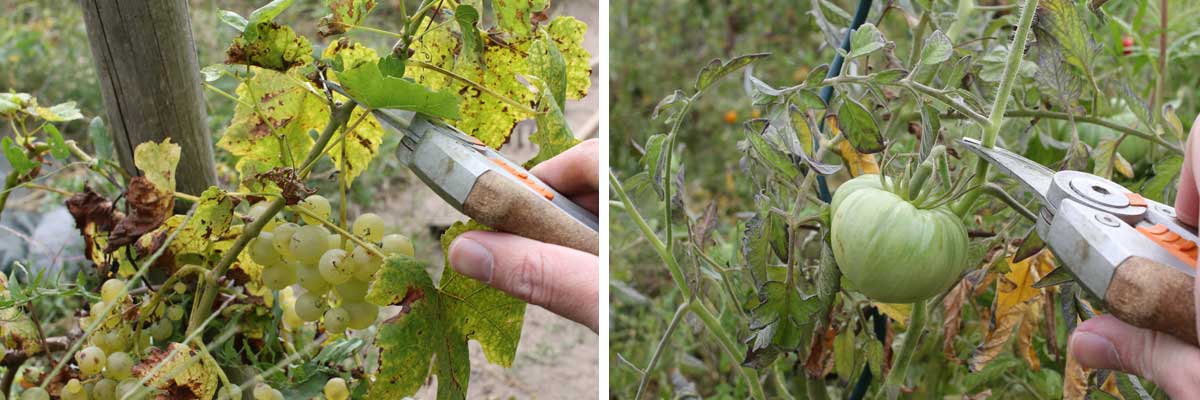 Defoliation of the vine and tomato plants at the end of the season
Defoliation of the vine and tomato plants at the end of the season
- Bagging fruits – Apple, pear, peach, grape
Bagging fruits is an excellent technique to obtain fruits that are free from diseases and pests, visually appealing, and that will easily reach ripeness as they will have been thinned before being bagged.
To bag, kraft paper bags and elastic bands or raffia are generally used to close the bag around the branch.
You must wait for the natural drop of small fruits, which occurs in June. At this time, apples and pears are the size of a walnut. Only one fruit per cluster is kept, and the others are thinned manually. Grapes are bagged when the berries are the size of a pea.
Once placed, the bags should be pierced at the bottom to allow rainwater to drain. The bags are removed about two weeks before harvest, so that the fruits regain their beautiful colours before being consumed.
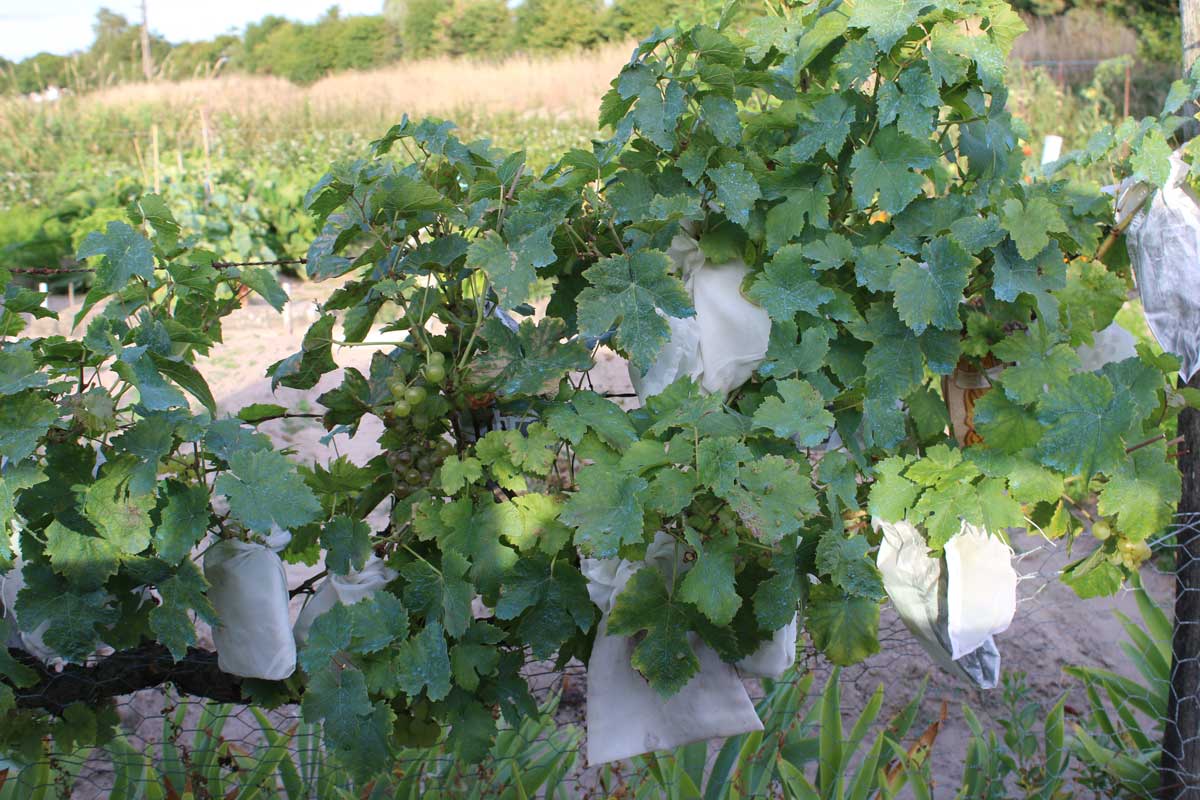 Naturally obtaining beautiful grapes by bagging the clusters
Naturally obtaining beautiful grapes by bagging the clusters
Read also
Preserving garden fruitsSome concrete examples
- Ripening green tomatoes
As we have just seen, green tomatoes can be picked and placed with other ripe tomatoes which will help them to ripen.
To do this, carefully sort your tomatoes before picking them, making sure to only select healthy green tomatoes, free from blight. You can then wrap each tomato in a sheet of newspaper, with the peduncle facing down. Place them in a dry, dark location. Your tomatoes should ripen within a few weeks.
If blight is not present in the vegetable garden, it is also possible to leave the fruits on the plants and remove the large tomato leaves that shade them. This way, your tomatoes will benefit from the last rays of sunshine.
Just before the first frosts, you can uproot the plants and hang them in a dry, airy place. A conservatory or greenhouse is ideal as they warm up during the day, and the tomatoes need this heat to reach maturity.
One last tip is to cook the green tomatoes; they can be prepared as pickles, chutney, or jams. I invite you to discover Virginie’s article: “What to do with green tomatoes” on this subject.
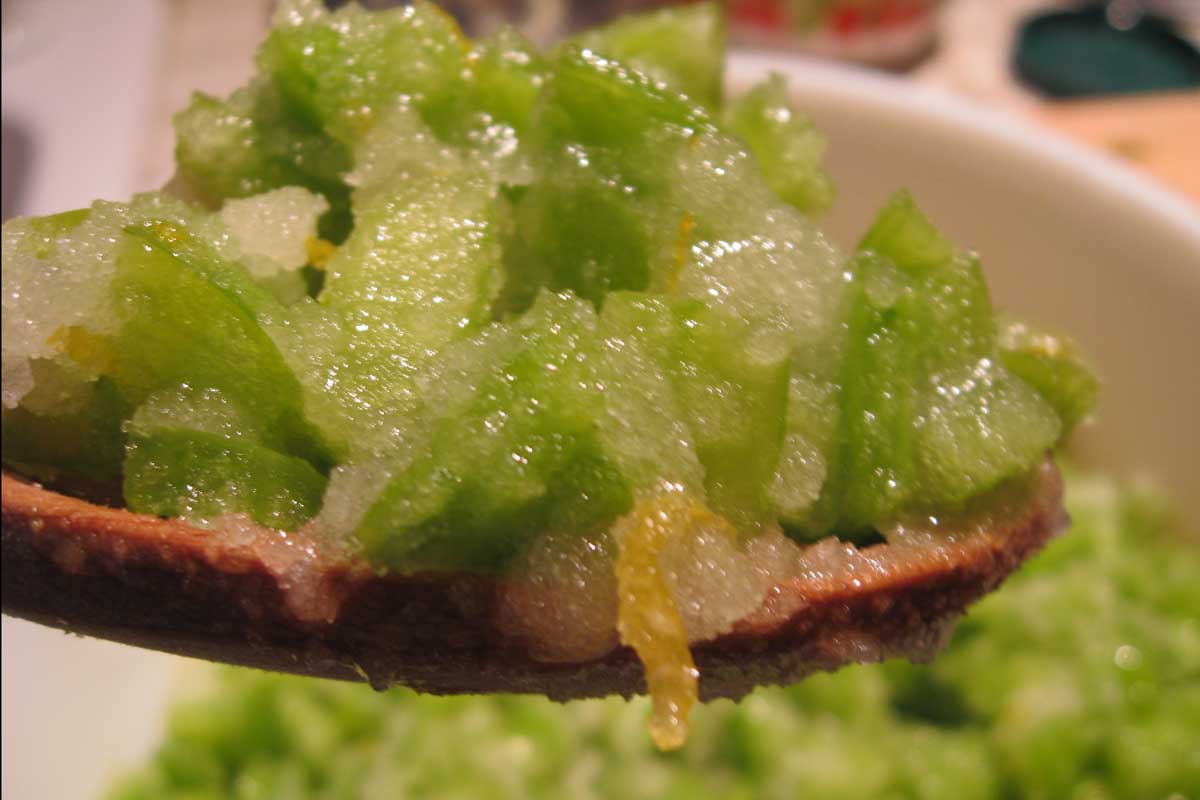
Try green tomato jam!
- Ripening melons
Fortunately, melon continues to ripen after harvest, unlike watermelon. However, it often has less flavour if it ripens long after being picked, so it is best to leave it on the plant for as long as possible. It is essential to protect the fruits from soil moisture, which can cause them to rot. To do this, place a slate or tile under the fruits. Covering the melons with cloches to gain warmth also helps to accelerate their ripening.
- Ripening garlic, onions, shallots
It can sometimes be tricky to successfully grow garlic, onions, and shallots in damp, cool regions – not this year, 2018! To hasten the ripening of the bulbs, it is beneficial to lay the stems of these vegetables down so that the sap concentrates in the bulbs.
- Subscribe!
- Contents
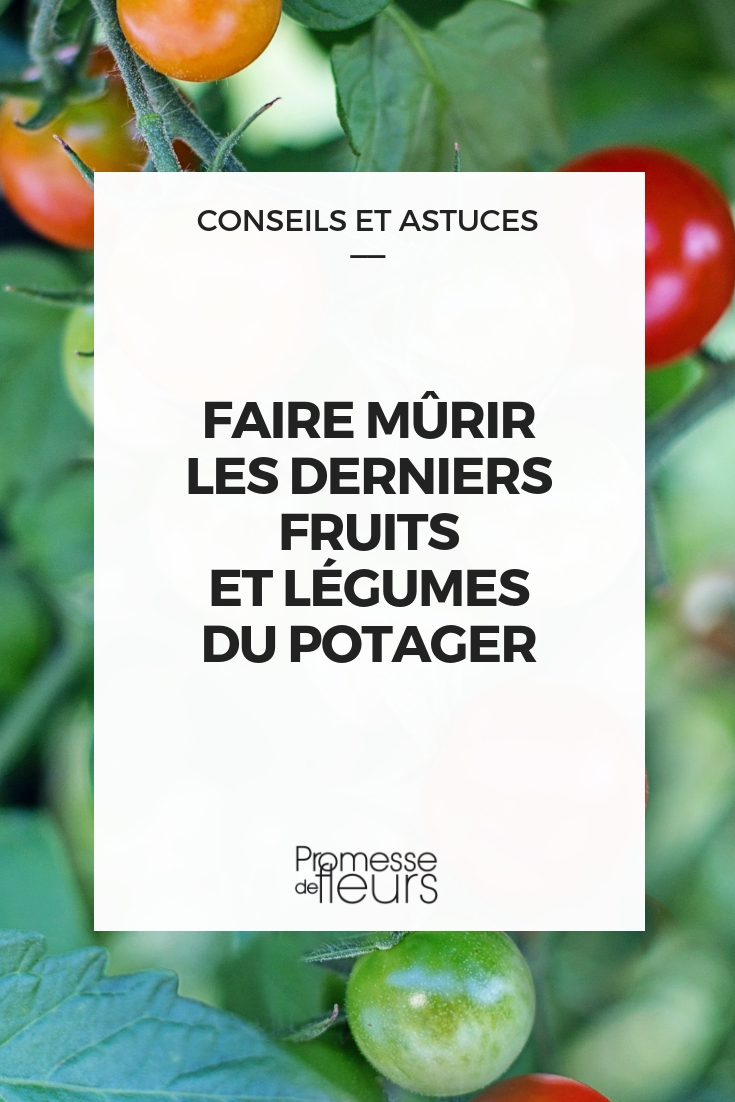































Comments